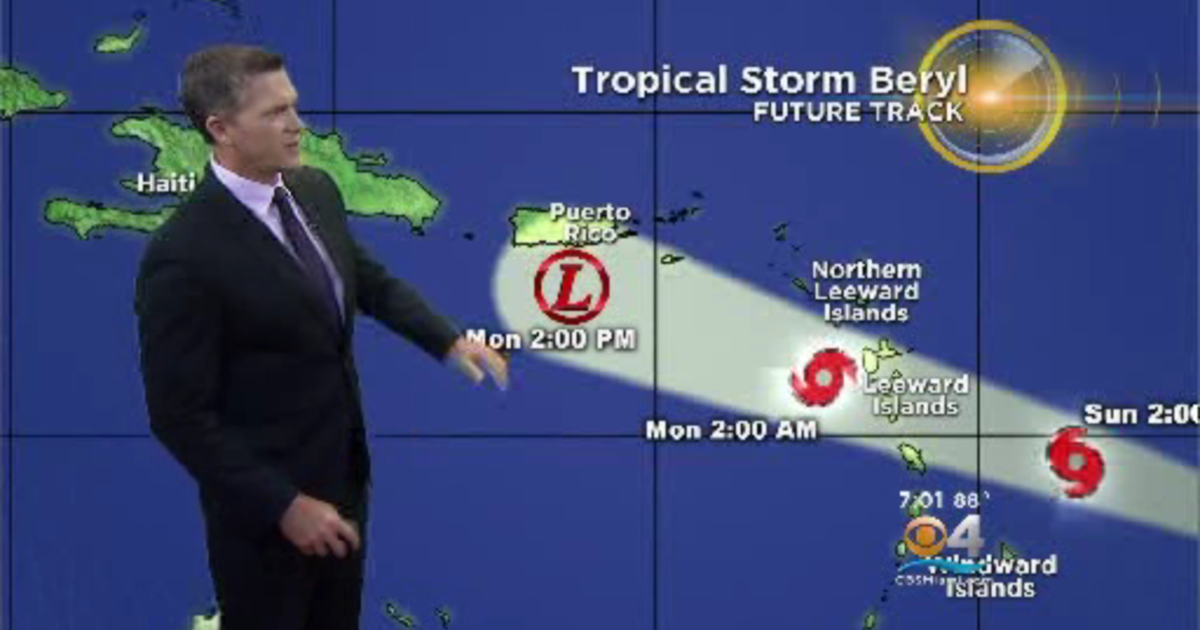Hurricane Beryl’s Path and Intensity: Hurricane Beryl Tracker

Hurricane beryl tracker – Hurricane Beryl, a powerful Category 4 storm, is expected to make landfall on the southeastern coast of the United States within the next 24 hours. The hurricane is currently located approximately 100 miles off the coast of Florida and is moving northwest at 15 mph.
As Hurricane Beryl barrels towards the coast, it’s crucial to stay informed with the latest updates from the hurricane beryl tracker. Senator Tim Scott , known for his unwavering support for coastal communities, has urged residents to evacuate and follow safety protocols.
By staying vigilant and using the hurricane beryl tracker, we can mitigate the impact of this storm and ensure the safety of our loved ones.
The National Hurricane Center (NHC) has issued a hurricane warning for the coast of Florida from Vero Beach to Jupiter Inlet. Tropical storm warnings are in effect for the coast of Georgia from the Florida-Georgia border to Altamaha Sound, as well as for the coast of South Carolina from Edisto Beach to the South Santee River.
The menacing Hurricane Beryl barrels across the Atlantic, its path a cause for concern. Yet, amidst the storm’s fury, a beacon of hope emerges: Brandon Aiyuk , the San Francisco 49ers’ electrifying wide receiver, makes headlines with his impressive preseason performance.
His blazing speed and sure hands ignite anticipation among fans, a glimmer of optimism amidst the tempestuous weather. The hurricane’s wrath may rage, but the news of Aiyuk’s brilliance offers a moment of respite, a reminder that even in the face of adversity, stars can shine brightly.
Forecasted Path and Intensity
The NHC predicts that Hurricane Beryl will continue to move northwest over the next 24 hours, making landfall near Vero Beach, Florida, by early tomorrow morning. The hurricane is expected to weaken slightly as it approaches land, but it is still likely to be a major hurricane at landfall.
After making landfall, Hurricane Beryl is expected to continue to weaken as it moves inland. The storm is expected to bring heavy rain and flooding to parts of Florida, Georgia, and South Carolina.
Potential Impact Zones
The following areas are at risk for significant impact from Hurricane Beryl:
- Coastal areas of Florida from Vero Beach to Jupiter Inlet
- Coastal areas of Georgia from the Florida-Georgia border to Altamaha Sound
- Coastal areas of South Carolina from Edisto Beach to the South Santee River
- Inland areas of Florida, Georgia, and South Carolina that are within the path of the storm
Residents in these areas should take precautions to prepare for the storm, including:
- Securing loose objects outdoors
- Stocking up on food and water
- Making an evacuation plan
Safety and Evacuation Measures

As Hurricane Beryl approaches, it’s crucial to prioritize safety and take appropriate evacuation measures. Individuals in the potential path of the storm should remain vigilant and adhere to the following safety precautions and evacuation procedures:
Monitor official weather updates and heed advisories from local authorities. Stay informed about the storm’s projected path, intensity, and potential impacts.
Evacuation Procedures
If evacuation is recommended or ordered for your area, follow these steps promptly:
- Gather essential supplies, including food, water, medications, first-aid kit, and important documents.
- Secure your home by boarding up windows, bringing in outdoor furniture, and turning off utilities.
- Identify and plan evacuation routes, considering traffic conditions and potential road closures.
- Locate designated shelters or evacuation centers in advance and have a plan for transportation.
Essential Supplies
Prepare an emergency kit with the following essential supplies:
- Bottled water (1 gallon per person per day)
- Non-perishable food items
- First-aid kit and essential medications
- Battery-powered radio and flashlights
- Copies of important documents (ID, insurance, medical records)
- Hygiene items (soap, hand sanitizer, toilet paper)
- Cash and credit cards
- Pet supplies (if applicable)
Impact on Infrastructure and Communities

Hurricane Beryl poses a significant threat to infrastructure and communities within its projected path. The storm’s high winds and heavy rainfall can cause widespread damage and disruptions, affecting essential services, transportation, and daily life.
Infrastructure
- Power Outages: Strong winds can topple power lines and damage electrical infrastructure, resulting in widespread power outages. These outages can disrupt communication, water supply, and other essential services.
- Transportation Disruptions: Flooding and debris can block roads and highways, hindering emergency response efforts and disrupting transportation systems. Airports and ports may also be closed due to high winds and storm surge.
- Building Damage: Hurricane-force winds can cause structural damage to buildings, including homes, businesses, and public infrastructure. Roofs can be torn off, windows shattered, and walls weakened, posing safety hazards and displacement.
Local Communities, Hurricane beryl tracker
- School Closures: Schools may be closed due to safety concerns, power outages, or transportation disruptions. This can disrupt educational schedules and childcare arrangements.
- Business Interruptions: Businesses may be forced to close temporarily due to power outages, damage, or transportation issues. This can lead to economic losses and disruptions in the local economy.
- Disruption of Essential Services: Power outages and infrastructure damage can disrupt essential services such as water supply, sanitation, and healthcare. This can pose health and safety risks to residents.